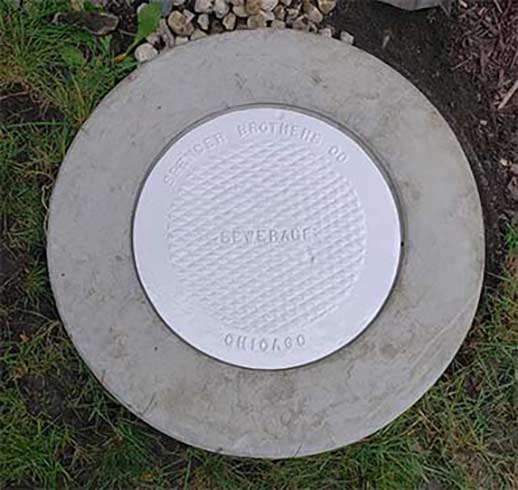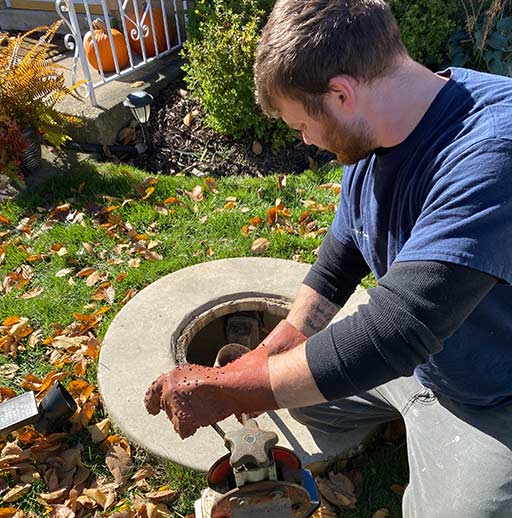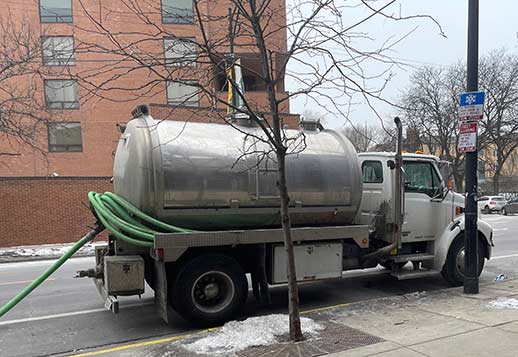
Catch basins, or storm drains, are vital components of the landscape drainage system around homes. They protect your home from the dangers of pooling water and surface runoff.
A catch basin is an in-ground enclosed basin covered by a grate. This grate helps to filter out the debris in water before it flows into the basin. When water enters the basin, solids settle at the bottom of the sump, while the cleaned water flows through the outlet pipe.
Catch basins are often found at the low point of the property where water tends to pool. Catch basins work alongside the rest of your home’s flood mitigation system (gutters and downspouts). But unlike these other features, catch basins are invisible, so they tend to be neglected.
Yellow Key Management warns that a catch basin can become the very source of the problems it is designed to prevent if it is not maintained properly. If debris obstructs the grate or there is too much sediment inside the sump, the catch basin may stop working.
How to maintain a catch basin to prevent costly drainage issues
Remove grass clippings and twigs
Do not let leaves, grass clippings, trash, twigs, and other debris lay around the yard. When using a leaf blower, be careful not to blow grass clippings or leaves into the catch basin or onto the street where they could wash into the storm sewer system. Getting rid of yard litter ensures you do not have to clean the catch basin often.
Keep grates clear of obstructions
The catch basin cannot collect water effectively if its cover is clogged. The water will be displaced to other locations on the property or street, defeating the entire purpose of having a catch basin in the property. The best times to clean your catch basin grate are early spring and fall. Also, whenever there is heavy rainfall, check to see that the grate is not clogged.

Clean the catch basin
Because it serves as a receptacle for the solids contained in stormwater, the catch basin sump can become filled with debris. To work optimally, the sump must be less than half-full of sediment. Clean the basin regularly to get rid of accumulated debris.
How often should you clean your catch basin?
Typically, most cities require that you clean the catch basin once the depth of solids inside it has reached one-third of the volume of the basin, from its bottom to the lowest inlet or outlet pipe. To check how much debris is in the basin, insert a long pipe or broomstick into the catch basin through the grate and mark the depth of the debris relative to the bottom. Do this check once every month.
How to clean a catch basin
There are two ways to clean a catch basin. Hire a vacuum pump truck service or clean it yourself. Hiring a professional for this job is quicker and safer. It is also a less expensive option if the catch basin contains hazardous materials that must be disposed of in a specific manner. If you choose to clean the catch basin by yourself, here are the steps to follow:
- Required tools and materials: shovel, leaf rake, trash can/bag, crowbar, plastic work gloves, shop vacuum, and bucket.
- Pry open the grate with the crowbar and lift the lid to remove it. Be careful when doing this; some grates will slip through the opening into the catch basin.
- Check if the debris inside the sump is a regular waste. If the water has a visible sheen, is cloudy, discolored, or has an odor, you may have industrial by-products inside the basin. These require special removal; alert a professional plumber or your local solid waste management office.
- If everything looks normal, use your gloved hand to scoop out the debris floating on top of the water. A leaf rake will make this process easier. Put the debris inside a trash bag.
- Vacuum out the water inside the basin with the shop vac. Dump the water into the bucket.
- Once all the water is gone, it is easier to dig up the compacted sediment with a shovel.
- After removing the sediment, inspect the catch basin for tree roots or plants growing inside it.
- Discard the trash where there is no chance of it re-entering the basin.

Other catch basin maintenance tips
- Each time you clean out your catch basin, remember to inspect the outlet pipe for damage.
- Install catch basin filter inserts to improve the basin’s ability to filter out debris and pollutants.
- Do not use the catch basin to dispose of anything apart from rainwater.
- When washing cars or equipment, do not let the water drain into the catch basin.
Finally, it is advisable to have your catch basin professionally inspected at least once a year as part of your home’s annual plumbing inspection. This simple step can save you a lot of money and help to prolong your catch basin’s lifespan.

